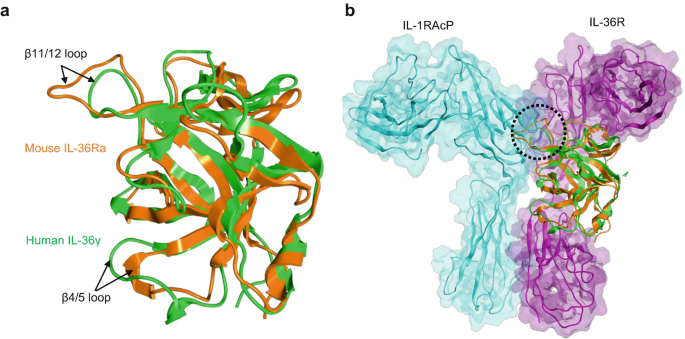Blog Post
Unraveling the Intricacies of Interleukin-36: A Key Player in Inflammatory Signaling
Interleukin-36 (IL-36) is a cytokine that has emerged as a crucial mediator in inflammatory signaling pathways, impacting various aspects of immune responses and disease pathogenesis. In this blog post, we delve into the complexities of IL-36, exploring its functions, implications in health and disease, and the latest research advancements.
Understanding Interleukin-36
IL-36 belongs to the IL-1 superfamily and comprises three isoforms: IL-36α, IL-36β, and IL-36γ, each with distinct but overlapping roles in immune regulation. These cytokines primarily signal through the IL-36 receptor (IL-36R), activating downstream pathways involved in inflammation and tissue homeostasis.
Functions and Effects
Research has revealed several key functions of IL-36, including:
- Proinflammatory Signaling: IL-36 stimulates the production of proinflammatory cytokines such as interleukin-1β (IL-1β), tumor necrosis factor-alpha (TNF-α), and interleukin-6 (IL-6), amplifying immune responses and inflammatory cascades.
- Immune Cell Activation: IL-36 activates immune cells such as T cells, dendritic cells, and macrophages, modulating their effector functions and contributing to immune surveillance and defense mechanisms.
- Tissue Remodeling: IL-36 influences tissue remodeling processes, including epithelial cell proliferation, wound healing, and angiogenesis, highlighting its role in tissue repair and regeneration.
- Barrier Function: IL-36 participates in maintaining epithelial barrier integrity, particularly in skin and mucosal tissues, crucial for defense against pathogens and environmental insults.
Implications in Health and Disease
The dysregulation of IL-36 signaling is associated with various inflammatory and autoimmune conditions, including:
- Psoriasis: IL-36 plays a significant role in psoriasis pathogenesis, driving keratinocyte activation and the development of psoriatic plaques.
- Inflammatory Bowel Disease (IBD): IL-36 dysregulation contributes to intestinal inflammation and mucosal damage in IBD, influencing disease severity and progression.
- Arthritis: IL-36 is implicated in inflammatory arthritis, affecting joint inflammation, cartilage degradation, and bone remodeling processes.
- Respiratory Disorders: IL-36 is involved in respiratory tract inflammation and airway hyperresponsiveness, with implications for conditions like asthma and chronic obstructive pulmonary disease (COPD).
Latest Research and Therapeutic Insights
Recent studies have shed light on novel therapeutic strategies targeting IL-36, including:
- Biologics: Biologic agents targeting IL-36R or IL-36 cytokines show promise in clinical trials for treating psoriasis and other IL-36-driven diseases.
- Small Molecule Inhibitors: Small molecule inhibitors of IL-36 signaling pathways are under investigation for their potential in modulating inflammatory responses and ameliorating disease symptoms.
- Precision Medicine: Advancements in understanding IL-36 subtypes and patient-specific immune profiles pave the way for personalized treatment approaches and targeted interventions.
Conclusion
Interleukin-36’s pivotal role in inflammatory signaling and immune modulation positions it as a significant player in health and disease. As research progresses, insights into IL-36’s mechanisms and therapeutic potential offer new avenues for precision medicine and targeted therapies, heralding a brighter future in combating inflammatory disorders.


